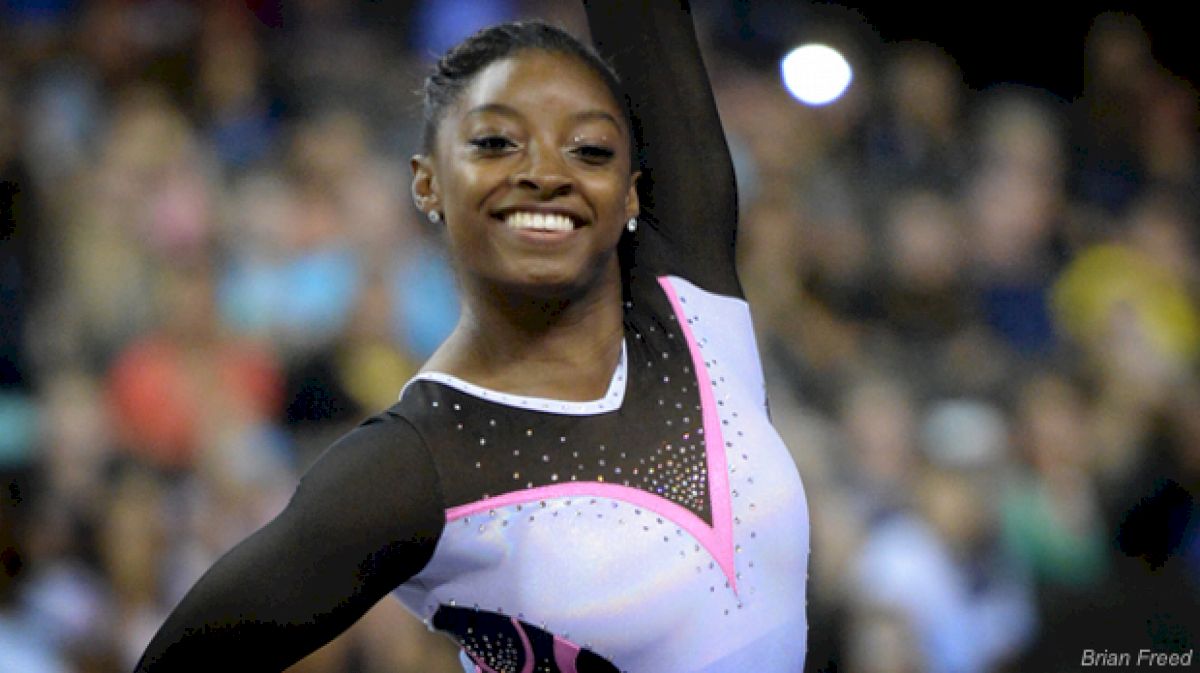Biles, Patterson Set Precedent For Classic 2 Years Ahead Of Olympics
Biles, Patterson Set Precedent For Classic 2 Years Ahead Of Olympics
The relationship between the U.S. Classic two years ahead of the Olympics shows some intruiging trends.

We’re only a month away from the U.S. Classic, a competition that hopeful elites must qualify to in their journey of possibly competing at U.S. Championships later in the summer. The U.S. Classic is one of the first domestic competitions where elites aim to demonstrate their progress for the season, and an important step in the selection process for World Championships in the fall.
Now that we are two years out from the next Olympics, it’s interesting to take a look at how the U.S. Classic in this spot of the quadrennium is a potential indicator for success at the Games. While some may expect that whoever is eventually named to the Olympic team should not only compete at this year’s Classic, but also be successful, this is often not the case. Injuries and comebacks have delayed gymnasts competing at this event in the past, and they still eventually go on to enjoy make the Olympic team. We took a look at previous Classics and how this has impacted the Olympics in that quadrennium.
Making The Team
In the past Olympic cycles, there have been gymnasts who have made the Olympic team who did not compete at the U.S. Classic two years beforehand, for various reasons. For the 2016 Olympic team, only Simone Biles and Madison Kocian competed at the 2014 Classic. Aly Raisman and Gabby Douglas were not fully ready since they were coming back from time off, and Laurie Hernandez did not compete at all in the junior session due to injury.
The 2012 Olympic team had a better turnout, and every gymnast who made the team competed at the 2010 Classic. Interestingly, Raisman was the only one who competed in the senior competition, while the other four were juniors at the time. The 2008 team, like 2016, also did not have everyone competing at Classic the two years beforehand. Missing from competition was Chellsie Memmel, who was dealing with a shoulder injury, as well as Bridget Sloan.
Becoming The AA Champ
How has a gymnast’s performance at Classics compared with their success at the Olympics in the all around? It’s 50/50. Biles won the all-around at the 2014 Classic and later went on to win the AA gold at the Olympics two years later. Carly Patterson did the same thing — she won the junior session of the U.S. Classic in 2002. Douglas and Nastia Liukin fared differently, with Douglas placing as low as ninth at the 2010 Classic and Liukin placing fourth at the 2006 Classic.
Enjoy this throwback to Biles’ floor routine from the 2014 Classic, which scored a 15.8:
Video via USA Gymnastics
Winning Event Medals
In terms of event medals, one of the events where the Classic is the best indicator for performance at the Olympics two years later is vault. Both Biles and McKayla Maroney did very well at their respective Classic competitions on vault and then later went on to win medals at the Olympics. Biles had the highest vault score at the 2014 Classic, and Maroney had the second highest in the junior division at the 2010 Classic.
Check out this great throwback to Maroney’s vault at the 2010 Classic:
Video via MostepanovaFan
The other events have no real pattern. Kocian, who won a medal at the 2016 Olympics on bars, placed second on the event at the 2014 Classic. Liukin, meanwhile, took the silver medal at the 2008 Olympics but did not place highly on the event at the 2006 Classic. On beam, Biles, Liukin and Shawn Johnson all did well at their respective Classics and then went on to win medals. Hernandez, however, did even better than Biles on beam at the 2016 Olympics, but she did not compete at the 2014 Classic. Raisman, who won the bronze on beam at the 2012 Olympics, didn’t do nearly as well as some others on beam at the 2010 Classic and placed fifth.
Floor is also hit or miss. Again, Biles did great at the 2014 Classic and went on to win the gold medal at the 2016 Olympics. Johnson’s story was similar — she placed second on floor at the 2006 Classic and later won the silver medal at the 2008 Olympics. But Raisman and Liukin were different. Raisman did not compete at the 2014 Classic but won the silver medal at the 2016 Olympics, and while she did compete at the 2010 Classic, she only placed fifth, compared to her first-place finish at the 2012 Olympics. Liukin finished very low in ninth at the 2006 Classic on floor but later won the bronze medal at the 2008 Olympics.
All in all, we’ll almost certainly see at least some of our future Olympians at the U.S. Classic, but don’t be surprised if some who don’t compete or don’t perform as well as they could end up as Olympic hopefuls in a few years.